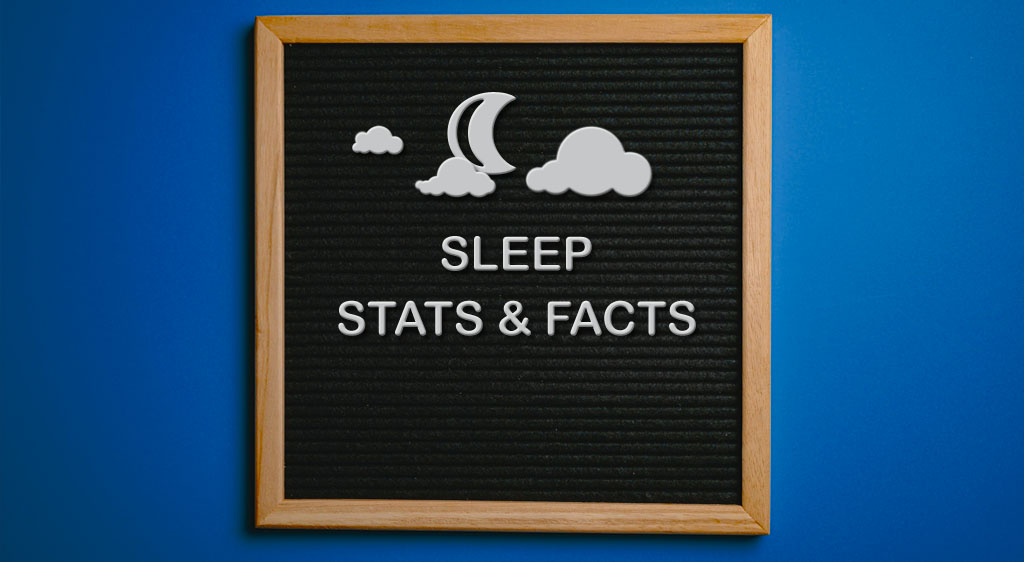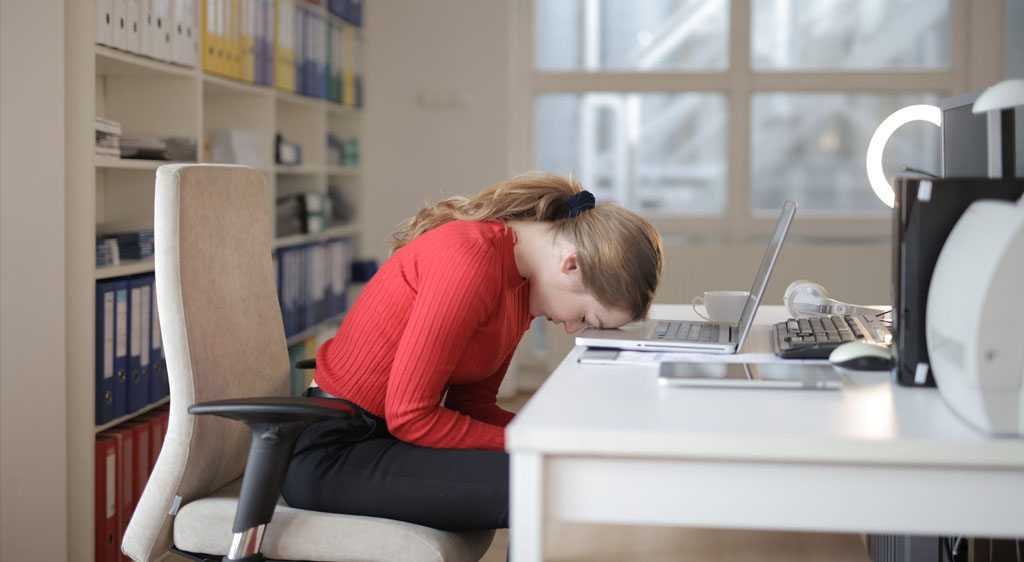Sleep Statistics
Sleep is a vital biological process for many animals, including humans. It is during sleep that our body rests and recovers from the regular stress it experiences. For example, when you are physically active, such as lifting weights at the gym, your muscles experience microscopic tears. It is during sleep that your body repairs these micro-tears. However, sleep serves more purpose than just repair and recovery. Sleep also allows our body to rebalance our hormones such as the appetite hormones ghrelin and leptin. Deep sleep also triggers the release of growth-promoting hormones. These hormones are also responsible for repairing the muscle micro-tears. Moreover, these hormones also stimulate your muscle cells to increase in number, making the muscles themselves grow. During puberty, these hormones are also responsible for bone growth that makes us taller.
Sleep also has a crucial role in brain function. Sleep allows our brain to collect the information we received in the day, process it, and prioritize which to store as memory. Furthermore, our brain flushes out toxins during sleep. During sleep, channels in the brain expand to allow the flow of cerebrospinal fluid to clear these unwanted materials.
(News Medical)
The Most Surprising Sleep Statistics
- About 48% of people snore.
- Only 35% get at least 7 hours of sleep per day.
- About 41% of adults prefer to sleep in the fetal position.
- Normally, falling asleep takes around 10 to 15 minutes.
- People dream 4 to 6 times per night.
- In the United States, lack of sleep causes a loss of $411 billion per year.
- Around 3 to 5% of obesity in people may be due to lack of sleep.
- Approximately 6% of adults suffer from insomnia.
(Center for Disease Control and Prevention), (Sleep.org), (Marco Hafner, M.sc), (Havard School of Public Health), (Thomas Roth, PhD)
The Most Surprising Sleep Statistics and Facts
1. We forget 95 to 99% of our dreams the next morning.
Interestingly some studies have shown that even people who haven’t recalled a single dream in decades or even their entire life can recall their dreams if they wake up at the right moment. Why we can’t remember our dreams is still a mystery, but there are some theories. When we go to sleep the levels of the neurotransmitters acetylcholine and noradrenaline go down. These neurotransmitters are important for retaining memories. However, when we enter the rapid eye movement (REM) stage of sleep, where the most vivid dreams occur, acetylcholine returns to wakefulness levels, but noradrenaline stays low. Scientists speculate that this change in levels may contribute to why we can’t remember dreams.
(Sleep.org), (Live Science)
2. The rapid eye movement (REM) stage of sleep comprises only 20% of our total sleep time.
Sleep has several stages, but they can be generally divided into 2: non-REM sleep and REM sleep. Non-REM sleep can be further divided into 3 stages.
(WebMD)
3. Stage 1 sleep lasts for around 5 or 10 minutes.
Stage 1 sleep is the lightest stage of non-REM sleep. In Stage 1, your eyes are closed, but it is easy to wake you up. Muscle tone throughout the body relaxes and brain wave activity begins to slow down. Some people may experience jerks or sudden muscle spasms and may even feel like they are falling while drifting in and out of Stage 1.
(Sleep.org)
4. Stage 2 comprises 40 to 60% of total sleep time.
Stage 2 sleep lasts around 20 minutes. Waking up from Stage 2 is not as easy as it is in Stage 1. Your heartbeat and breathing slow, and muscles relax even further. Body temperature goes down and eye movements stop. Brain wave activity also slows but there are specific bursts of rapid activity known as sleep spindles.
(National Institue of Neurological Disorder and Stroke), (Very Well Health)
5. Stage 3 is the period of deep sleep and is the most restorative.
During this stage, the body repairs muscles and tissues, stimulates growth and development, boosts immune function, and builds up energy for the next day. The brain starts making slow delta waves. Heartbeat and breathing slow down, the muscles relax, and there are no eye movements. Your body is less responsive to stimuli. Waking from Stage 3 is much more difficult compared to the previous stages. When you do wake up from Stage 3, you feel refreshed.
(Sleep.org)
6. You generally enter REM sleep about 90 minutes after initially falling asleep.
REM stage is the final sleep stage. Each REM stage can last up to an hour. It is also during this stage where the brain becomes more active. Most dreams occur in REM sleep (some dreams can still happen in non-REM sleep) and your eyes move quickly in different directions. The arm and leg muscles become temporarily paralyzed, which keeps you from acting out your dreams.
(National Institute of Neurological Disorders and Stroke), (Sleep.org)
7. On average, an adult can have 5 to 6 REM cycles each night.
As we age, we spend less of your time in REM sleep. REM sleep plays an important role in learning and memory function, but memory consolidation probably requires both non-REM and REM sleep. Waking up from REM sleep can make you feel groggy or overly sleepy.
(National Institute of Neurological Disorders and Stroke), (Sleep.org)
8. Body temperature can be 1 to 2 degrees lowers when sleeping.
Body temperature starts to go down as bedtime nears. The body also tends to lose heat. These effects help us fall asleep because we sleep better when we are cooler. It is also unrecommended that we exercise near bedtime since that would raise our body temperature.
(WebMD)
Having Insufficient Sleep and the Consequences
9. Although sleep in important in all stages in life, age groups vary in the amounts of sleep they need, with infants needing the most sleep. Below are the different sleep durations each age group needs
| LIFE STAGES | AGE RANGE | AMOUNT OF SLEEP |
|---|---|---|
|
Infants
|
4 to 12 months
|
12 to 16 hours (including naps)
|
|
Children
|
1 to 2 years
|
11 to 14 hours (including naps)
|
|
Children
|
3 to 5 years
|
10 to 13 hours (including naps)
|
|
Children
|
6 to 12 years
|
9 to 12 hours (including naps)
|
|
Teenagers
|
13 to 19 years
|
8 to 10 hours
|
|
Adults
|
19 years and above
|
7 to 9 hours
|
(National Heart, Lung, and Blood Institute)
10. A sleep statistics study done by the CDC found that 67% of married people sleep better.
In contrast, the CDC only found 62% of those who are not married and 56% of those who are divorced, widowed, or separated sleep well.
(Center for Disease Control and Prevention)
11. Moreover, the CDC found that only 60% of the unemployed had healthy sleep durations.
Similarly, the CDC found only 51% of those who were unable to work also had healthy sleep durations. In contrast, 65% of those who were employed had healthy sleep durations.
(Center for Disease Control and Prevention)
12. However, although the sleep needs of each age group are already known, many, especially adults, still lack sleep. Below are the percentages of people per age group (18 years and above) who get less than 7 hours of sleep.
| AGE GROUP | PERCENTAGE |
|---|---|
|
18 to 24
|
32%
|
|
25 to 24
|
38%
|
|
35 to 44
|
38%
|
|
45 to 54
|
39%
|
|
54 to 65
|
36%
|
|
65 and older
|
26%
|
(Center for Disease Control and Prevention)
13. Only 3% of teenagers have 9 hours of sleep per day.
There are many reasons for the lack of sleep that teenagers get. Devices such as smartphones and computers act as distractions that take away sleep time. Moreover, the blue light these devices emit can suppress the effects of the sleep hormone melatonin, making teens feel less sleepy when they should be. After-school activities such as homework, sports, part-time work, and other social commitments can take some sleeping time.
(Scientific American), (Better Health), (Harvard Medical School)
14. The average amount of sleep that teenagers get is 6.5 hours.
Moreover, 20% of teens report they only sleep for 5 hours or less per day. These teenage sleep statistics are alarming since lack of sleep can lead to several physical and mental health issues. Such as high blood pressure, obesity, and depression.
(Scientific American)
15. A study found that teens can have a 38% higher risk of feeling sad and hopeless per hour of lost sleep.
There is an evident connection between sleep and mood, but the molecular mechanisms are complex. Insomnia has been repeatedly associated with psychological problems such as depression and anxiety. Many studies show that either sleep disturbances lead to mood disorders or sleep disturbances are a symptom of mood disorders.
(Scientific American), (WebMD)
16. The same study also found that teens can have a 42% higher risk of considering suicide per hour of lost sleep.
Moreover, there are 58 and 23% higher risks of suicide attempts and substance abuse per hour of lost sleep.
(Scientific American)
Sleep Disorders
17. In the United States alone, 50 to 70 million people suffer from one or more sleep disorders.
These sleep disorders include insomnia, narcolepsy, restless legs syndrome, and sleep apnea.
(Maternal and Child Health Bureau)
18. Between 24 and 31% of men and between 9 to 21% of women have obstructive sleep apnea.
Obstructive sleep apnea is a condition wherein something partially or completely blocks your upper airway while you sleep. The muscles in the throat area are common culprits. Untreated sleep apnea can lead to other health problems like hypertension, heart disease, stroke, and diabetes.
(American Sleep Association), (WebMD), (Healthline)
19. Sleep statistics estimate that restless legs syndrome (RLS) is present in between 7 and 24% of the general population.
People with RLS feel uncomfortable and sometimes painful sensations in their legs and sometimes arms. These sensations usually occur when asleep. Because of these sensations, people with RLS get an unbearable urge to move their legs, which temporarily provides relief.
(WebMD), (Pooja Budhiraja, M.D.)
20. Sleep statistics estimate that narcolepsy type 1 is present in 14 per 100,000 people while narcolepsy type 2 is present in 65.4 per 100,000 people.
Narcolepsy is a sleep disorder wherein people experience excessive sleepiness, sleep paralysis, hallucinations, and in some cases of cataplexy. Narcolepsy type 1 occurs when nearly all of the neurons that contain orexin are lost. Orexin, also known as hypocretin, is a neuropeptide that regulates arousal, wakefulness, and appetite. Narcolepsy type 1, besides causing excessive daytime sleepiness, also causes cataplexy, a condition that causes muscle weakness that is usually triggered by intense emotions such as excitement. Narcolepsy type 2 also causes excessive daytime sleepiness but usually do not have muscle weakness triggered by emotions. This type has less severe symptoms and has normal levels of orexin.
(National Institute of Neurological Disorders and Stoke), (Dr. Jennifer Slowik)
Conclusion
Many think of sleep as a luxury or an unnecessary interruption of their activities. However, this cannot be further from the truth. Sleep is an essential biological process that keeps us physically and mentally healthy. Allot one-third of the day for sleep, avoid anything that would increase your risk of having sleep disorders, and have yourself treated if you do suffer from one or more sleep disorders.
References
News Medical:
https://www.news-medical.net/medical/about
Center for Disease Control and Prevention:
https://www.cdc.gov/mmwr/preview/mmwrhtml/mm6008a2.htm
Center for Disease Control and Prevention:
https://www.cdc.gov/media/releases/2016/p0215-enough-sleep.html
Sleep:
https://www.sleep.org/articles/best-sleep-position/
Sleep:
https://www.sleep.org/articles/how-often-dreams/
Hafner et al., 2016:
https://www.rand.org/pubs/research_reports/RR1791.html
Harvard School of Public Health:
https://www.hsph.harvard.edu/nutritionsource/sleep/
Roth, 2007:
https://www.ncbi.nlm.nih.gov/pmc/articles/PMC1978319/
National Heart, Lung, and Blood Institute:
https://www.nhlbi.nih.gov/node/4606
Center for Disease Control and Prevention:
https://www.cdc.gov/sleep/data_statistics.html
Scientific American:
Better Health:
https://www.betterhealth.vic.gov.au/health/healthyliving/teenagers-and-sleep
Harvard Medical School:
https://www.health.harvard.edu/staying-healthy/blue-light-has-a-dark-side
WebMD:
https://www.webmd.com/sleep-disorders/what-happens-body-during-sleep
Natioanl Institute of Neurological Disorders and Stroke:
https://www.ninds.nih.gov/Disorders/Patient-Caregiver-Education/Understanding-Sleep
Sleep:
https://www.sleep.org/articles/what-happens-during-sleep/
Very Well Health:
https://www.verywellhealth.com/the-four-stages-of-sleep-2795920
Maternal and Child Health Bureau:
https://mchb.hrsa.gov/whusa11/hstat/hshi/downloads/pdf/224sd.pdf
American Sleep Association:
https://www.sleepassociation.org/about-sleep/sleep-statistics/
WebMD:
https://www.webmd.com/sleep-disorders/sleep-apnea/understanding-obstructive-sleep-apnea-syndrome
Healthline:
https://www.healthline.com/health/sleep/obstructive-sleep-apnea
Budhiraja et al., 2012:
https://www.ncbi.nlm.nih.gov/pmc/articles/PMC3311406/
WebMD:
https://www.webmd.com/brain/restless-legs-syndrome/restless-legs-syndrome-rls#1
Slowik et al., 2019:
https://www.ncbi.nlm.nih.gov/books/NBK459236/
National Institute of Neurological Disorders and Stroke:
https://www.ninds.nih.gov/Disorders/Patient-Caregiver-Education/fact-sheets/narcolepsy-fact-sheet


